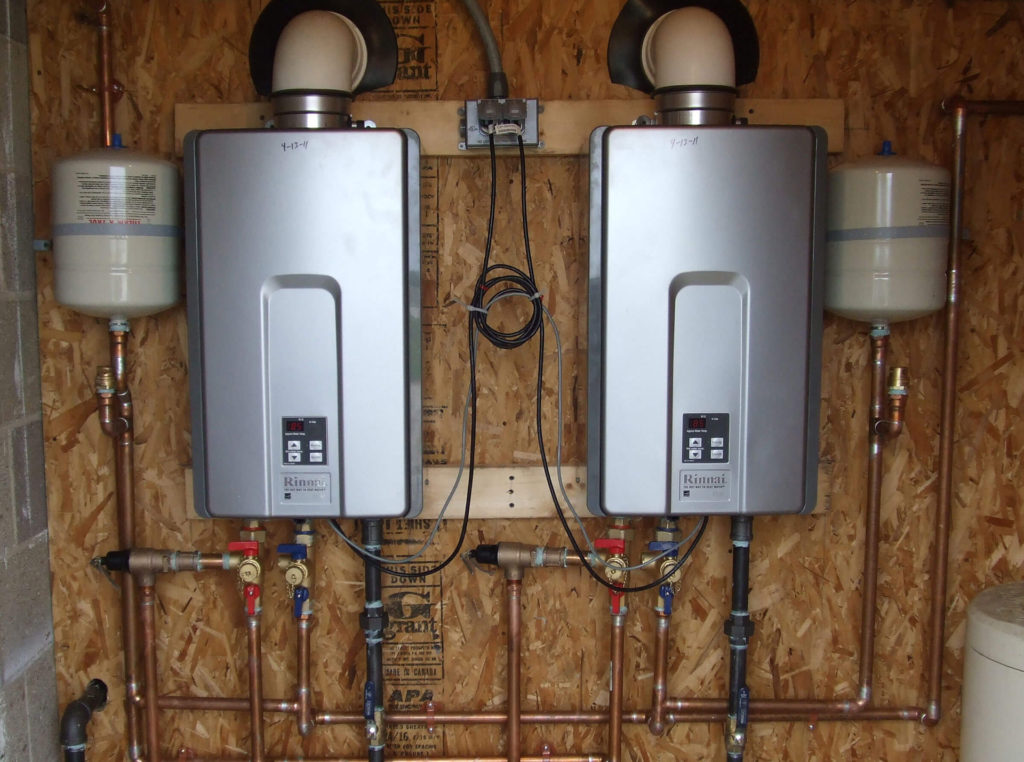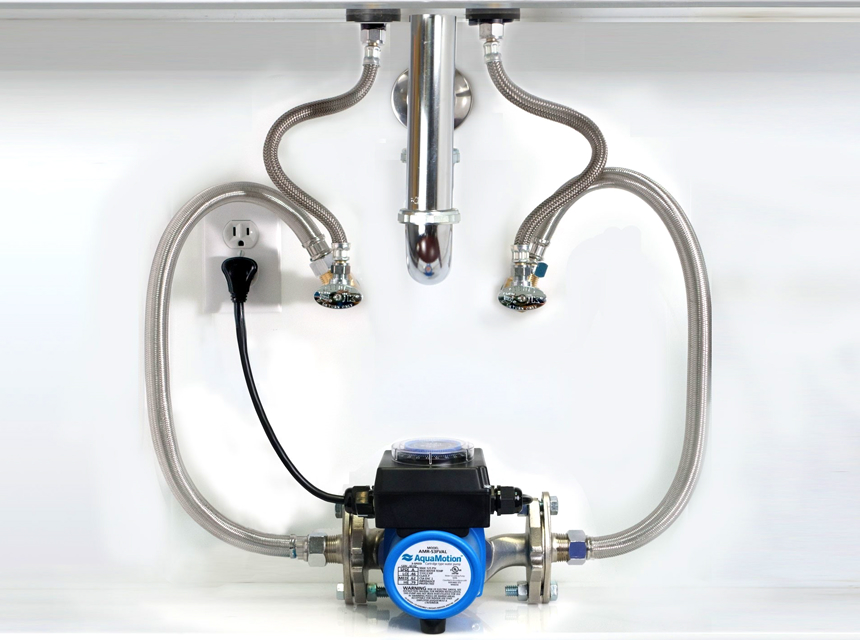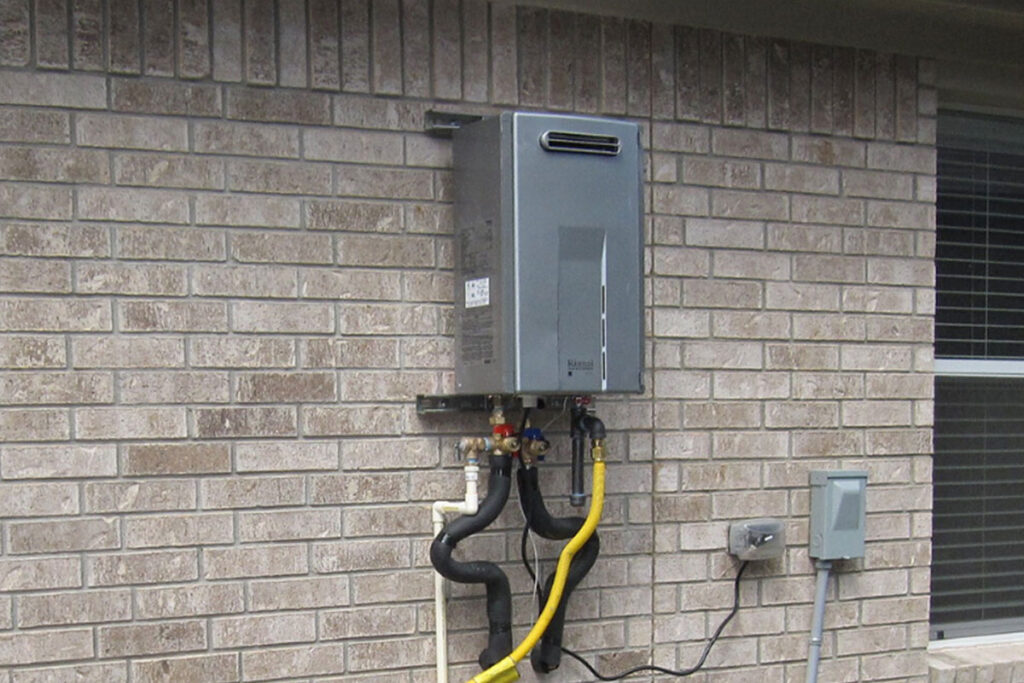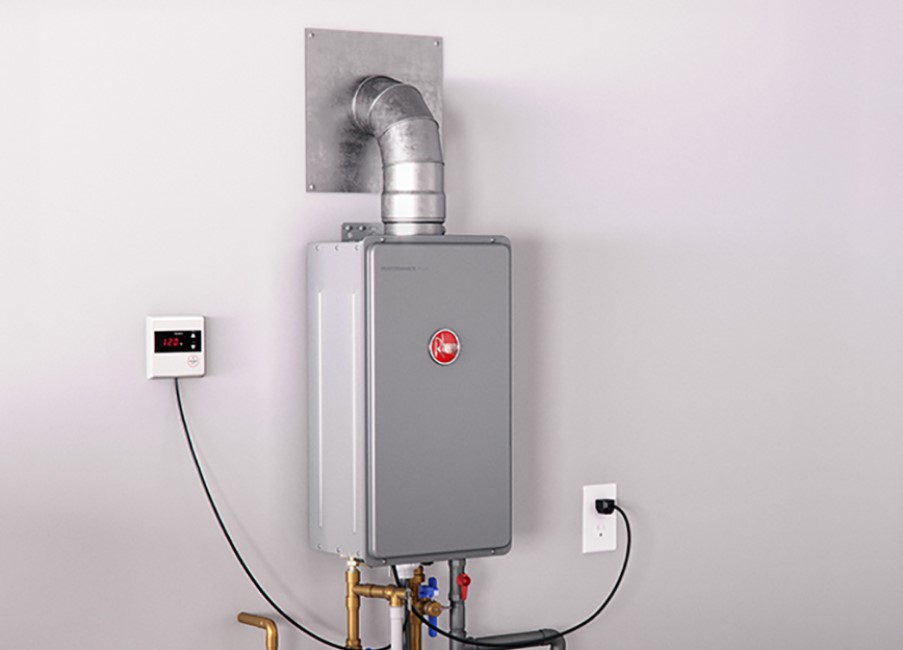

The less time you spend thinking about your water heater, the better. After all, if you aren’t thinking about it, chances are that it is doing what it is supposed to – give you hot water whenever you need it. However, it is good to have at least a basic understanding of how this appliance works and what you can do when it needs replacement or repairs. This article will focus on answering the question – how does a water heater work?
There are different types of water heaters on the market, but in this post, we will focus on the four major options. We will consider each of them and how they work. We will also discover which kind of water heater is better between the electric water heater and the gas water heater. At the end of this article, you will have all the essential information you need to know about how the water heater works.
To know how the heater works, we need to consider the most essential parts of every water heater, regardless of the type.
The tank is an important part of the heater. It is made up of a steel outer jacket that covers a pressure-tested water tank. The typical tank is divided into two – the outer and the inner tank. Most high-quality water heaters have their inner tank made of high-grade steel and a plastic layer to prevent corrosion.
The center of the tank houses the exhaust flue. This component is important particularly in gas-powered water heaters because that is where the fumes from the burner flow up to the vent. Other models might not have this, though, with some coming with a spiral metal baffle for trapping the heat and sending it to the tack.
There is often insulation between both inner and outer tanks, and this is important for efficiency as it reduces the amount of heat lost. If you are thinking of modifying your tank, you can do so by adding another insulating tank jacket to the outer tank.
There are two main types of discharge pipes found in any water heater. These pipes are often installed on the apex of the tank. They are the cold water supply pipe and the hot water discharge pipe.
Cold water supply – As the name implies, this pipe is created to provide cold water to the tank. It supplies this via a supply line which is controlled by a shutoff valve. When setting up and using the heater, one of the first things that you should look out for is the location of this pipe. You will need this knowledge during maintenance.
When the shutoff valve is closed, all the water stops flowing out. For easy identification, many manufacturers label this valve with a blue color.
Hot water discharge – This is where the hot water comes from. It is a pipe that extends from the heater and supplies hot water to the connected faucets, tubs, kitchen, and appliances that need it. As with the cold water supply pipe, it comes with a shutoff valve that you should identify. It is denoted in most cases by a red handle.
If you have a gas water heater, then this is a component you are sure to find in it. The propane that serves as fuel for heating the water comes from a pipe. During assembly, a professional draw the pipe and connects it to the mains. If you have this type of water heater, you must know where its shutoff valve is so that you can switch off the valve in cases of emergencies.
The gas regulator is what connects your gas to the burner. Part of what you will find in the burner assembly includes the pilot light, and of course, the gas burner. These components are important to the effective operation of the water heater and if they are faulty, you will face issues with your heater.
Part of the components of the pilot light includes the thermocouple or the flame sensor.
This component is a hollow cylinder that is found in the middle of the tank. It is also one of the most important parts of the heater. The function of this part is to remove combustion gases from the burner and serve as a conduit for heating the water in your tank. It must be properly vented to the outdoors.
There are different valves in your water heater, and this is one of the most important, especially in terms of safety. If you have a vehicle, you know the importance of the radiator cap. Well, this valve serves a similar purpose. It works to reduce the temperature or pressure in the tank if it reaches dangerous levels or specific levels determined by the manufacturer. If for any reason this is not working well, you have to change it as soon as possible.
The tank drain valve is an important part of any water heater and it comes in very handy when it is time to maintain the unit. If your water heater has plenty of sediments, you need to clean it out or it will not work effectively. This part is critical to helping you to flush the tank as correctly and thoroughly as possible.
The thermostat is an essential component too as it is what will help you to control the temperature. It will determine how hot the water will be and can be adjusted to however hot you want the water to be.
There are several types of water heaters on the market, and in this section, we take a quick look at each of the popular types and see how they work.
This type of heater is the more common type of heater you will find. It is a convenient option and as the name implies, it is installed with a tank. The tank is important because it is what contains the hot water supplied to the other faucets. You can find the tank water heater powered by electricity or by gas.
Most of the people we have interacted with via reviews prefer the gas type of heater, even though it costs more. There are some reasons why they like it, and we will compare the two types of tank water heaters later in this article.
The working operation of these heaters is relatively simple. The cold water from your regular supply enters from under the tank. It is then heated using a heating element in the tank (for electric heaters) or heated via a gas burner at the bottom of the tank.
There is usually a thermostat included in this tank and it is what is used to maintain the temperature of the water. Furthermore, it comes with a pressure valve to stop any pressure build-up. There are valves that open when you need water.
As the name implies, this type of water heater does not come with a tank. Instead of the tank, it gets its water right from the water supply of the house. The water is heated when you need it and it doesn’t store heated water anywhere. Due to the design, these heaters can last for a long time and are generally considered to be the more durable type of heater when compared with tank heaters. One of the best we have found from reviews is the EcoSmart ECO 111 tankless heater with its modulating technology.
These heaters do not have a tank where they store hot water. Instead, you get the hot water you need on demand. In order words, it is inactive until you open the tap. When you open the hot water tap, water then passes into the heater.
The heating element is either gas or electric, and it is signaled by a water sensor to begin heating the water. Therefore, it will boil the water as it passes through the element. Some models might take some seconds to heat the water while others are also instantaneous.
If your tankless model is powered by gas, it will have a vent for eliminating any fumes that might be created in the heating of the water.
One advantage of this type of heater is that it stops working when not in use, which will save you on energy expenses.
As you might expect, this type of water heater blends the qualities of the tankless model and the tank water heater. Some refer to it as the heat pump water heater. While this type of heater is electric, it uses a little amount of power when compared to the typical electric heater.
This type of heater uses the heat and air to heat your water. It removes heat from ground air, transfers it to the tank, which then warms the water.
Its operation is simple and very economical.
This is usually a tankless option that works with electricity. It is different from the others because it only supplies water to one location. The Bosch Electric water heater is found in many reviews as one of the best portable options available.
It uses an electric heating element to heat water as it passes through the tap.
These are water heaters that work using the power from the sun. Instead of electricity, the heating element is powered by solar energy.
To use this, you must have solar panels on the roof. The energy from the sun’s rays is then transferred via a conductor to the tank and heats the water.
Gas and electricity are two of the most common ways of running a water heater. Which is better between the two?
Well, although the gas heater is initially more expensive, it offers more economical value over time since it costs less to run it. Also, you can use it at all times, even when you don’t have power.
The main drawback of gas heaters is that they produce emissions that are not good for the environment. Additionally, there is a risk of explosion with gas heaters, so you have to be very careful when using them.
Knowing how the different types of water heaters work is important if you are thinking about buying a heater. The differences will help you to decide which one to buy. It is also important to know how a water heater works if you want to maintain them properly and use them safely. We hope that this post helps you in this regard.





